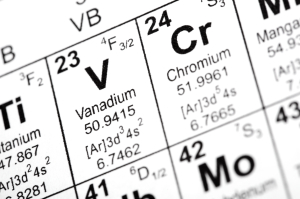Project monitoring:
Priv.-Doz. Dipl.-Ing. Dr.mont. Stefan Luidold
The special metals maintain a central position in the industrialized world despite their marginal production volume in comparison to the common metals, because they cannot be substituted by other materials in many applications. This group contains not only the so-called rare earth metals (yttrium, lanthanum, cerium, etc.) and the high melting refractory metals (tungsten, molybdenum, niobium, tantalum …) as well as the precious metals (silver, gold, platinum, palladium, etc.), but also elements such as indium and gallium. Individual elements of the rare earth metals for example find significant applications for the production of phosphors used in the lighting industry (fluorescent lamps, energy-saving lamps, white LEDs, etc.). Others are contained in the material for permanent magnets of electric motors, generators, loudspeakers, microphones, etc.). Beyond that, the large scale manufacture of photovoltaic cells of the second generation requires adequate amounts of indium and gallium. Therefore, the demand for special metals, which has increased sharply in recent years, will further rise in the near future. However, some of these elements do not form their own ores in the earth’s crust. They are obtained as by-products of other metals and therefore their production cannot be independently expanded. Regarding other special metals, primarily the rare earth elements, powerful monopoly positions result in a shortage of the raw material supply and therefore in an enormous price increase. Finally, these circumstances lead to economic dependencies.
For this reason, the aim of the intended Research Studios Austria is the systematic registration and evaluation of the current application areas of special metals. The obtained results will enable the identification of various waste materials or residues as potential secondary resources. Specific investigations in the next step should facilitate the recovery of valuable metals from these wastes. An appropriate adaptation and modification of existing processes on the one hand and the development of new and innovative technologies on the other hand are therefore general approaches to be employed. Finally, this should result in not only improved competitiveness of the highly technological industry, which contributes to the protection, expansion and upgrading of the employment in this industrial sector, but also reduce the dependence on imports of foreign raw materials.






